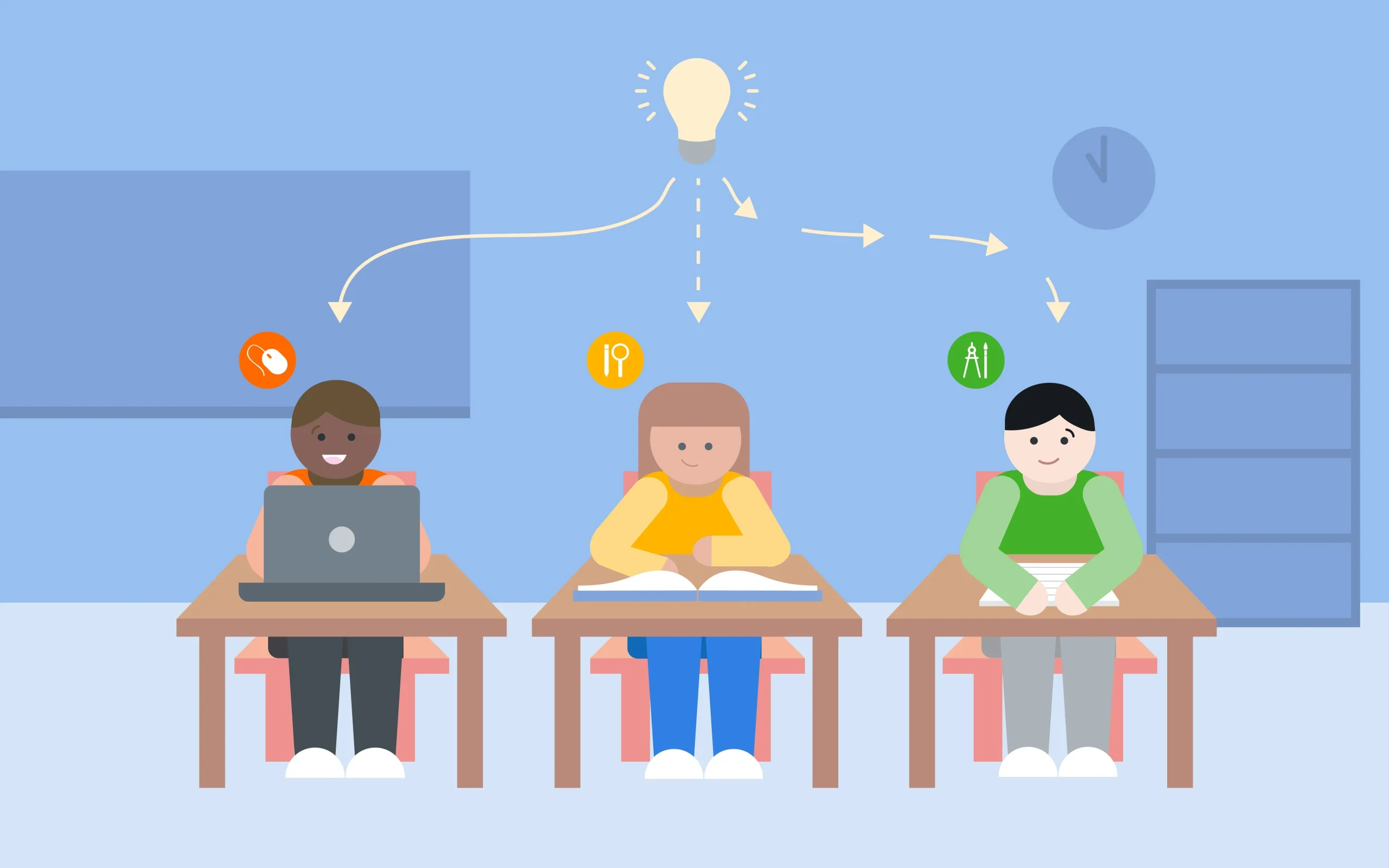AI in schools is a growing trend that is revolutionizing the way students learn. By leveraging the power of artificial intelligence, educators and students alike are able to benefit from increased productivity and improved outcomes. AI helps students to learn smarter by providing them with personalized learning experiences that are tailored to their individual learning styles, as well as access to information and data to help them better understand the material.
In this blog post, we’ll explore how AI is helping to make education more effective and efficient.
1. Personalized Learning
Imagine a classroom where every student is able to learn at their own pace and in a way that best suits them. For example, one student might prefer visual aids to understand a concept, while another student might learn best through interactive activities. This is the concept of personalized learning, and it can greatly benefit students.
AI in schools helps students by offering personalized learning experiences. By analyzing data on each student’s strengths and weaknesses, AI can create customized learning plans that cater to each student’s needs. This means that each student receives the support and guidance they need to achieve their full potential.
There are numerous benefits of personalized learning. For one, it ensures that students are able to master concepts before moving on to new material, which helps to prevent them from falling behind. Additionally, students who are engaged in their learning are more likely to develop a lifelong love of learning, which can help them to be more successful throughout their lives. By personalizing the learning experience, AI helps students to remain engaged and motivated, which is essential for success.
Thus, personalized learning is an effective way to ensure that students receive a high-quality education that is tailored to their unique needs and learning styles. With the help of AI, educators are able to offer this type of learning experience to all students, which is a huge win for both students and teachers alike.
2. Student Engagement and Motivation

One of the biggest challenges that teachers face is making sure that their students are engaged and motivated in the classroom. It can be difficult to grab and maintain their attention, especially when dealing with larger classes. However, this is where AI comes in and shows us how it can improve education.
AI has the ability to personalize learning for each individual student, creating a unique and engaging experience that is tailored to their needs and learning styles. By using machine learning algorithms, AI can gather information about each student’s performance and preferences and create a customized curriculum for them. This not only improves their engagement but also their motivation to learn.
So, is there anything AI can do more for student engagement and motivation?
Absolutely! AI is a dedicated helper, since it also can:
- Provide real-time feedback and recognition, making the learning experience more interactive and enjoyable. This type of positive reinforcement is a great way to boost student motivation and improve their overall performance in the classroom.
- Make rooms for collaboration and peer-to-peer learning, enhancing the classroom experience to be more engaging and social. Students can work together on group projects and share ideas, improving their social skills and teamwork abilities.
Overall, the use of AI in education can lead to higher engagement and motivation among students, which can lead to better learning outcomes. This is especially important in today’s digital age, where students are exposed to technology on a daily basis. By incorporating AI in education, we can provide a more modern and relevant learning experience for students.
3. Early Detection of Learning Gaps

Learning gaps occur when students struggle with mastering a particular concept or skill. This could happen due to a variety of reasons such as insufficient practice, a lack of foundational knowledge or ineffective teaching strategies. Left unaddressed, learning gaps can accumulate and hinder students’ progress in the long term. They may even develop negative feelings towards learning, leading to disengagement and eventually dropping out of school.
Fortunately, with the advent of AI, it is possible to detect learning gaps early and prevent them from turning into bigger problems.
How does AI work as learning gap detector?
Student has learning gap
Due to insufficient practice, or a lack of foundational knowledge, etc.
AI identifies the learning issue
Analyze students’ performance data and identify areas where they are struggling
(E.g. repeated errors or inconsistencies in students’ responses)
AI suggests improvement and resolution
Provide feedback and adaptive learning activities to help students’ weaknesses
By incorporating adaptive learning software into their curriculum, teachers can customize the learning experience for individual students. AI can analyze each student’s performance and identify specific areas where they need more support. This approach ensures that every student receives the necessary attention and support to master the curriculum and progress at their own pace.
In summary, early detection of learning gaps is critical to ensure that students have a strong foundation to build on. AI can be an excellent tool for identifying these gaps and providing targeted support. With AI-powered tools, teachers can better understand their students’ strengths and weaknesses and design personalized learning plans that help every student succeed.
4. Increased Productivity for Teachers

Traditionally, teachers spend a lot of time preparing lesson plans, grading assignments and assessments, and providing individualized feedback to students. However, with the integration of AI technology in education, teachers can become more efficient and productive in their roles. Here are some examples of how AI can help increase productivity for teachers:
- Automated grading and feedback: With AI-powered grading systems, teachers can save hours of time by having assignments and assessments automatically graded and analyzed. AI can also provide instant feedback to students, which allows teachers to spend more time on individualized instruction and feedback.
- Auto-generated lesson plans and material: AI technology can help teachers create personalized lesson plans that are tailored to individual students’ needs and learning styles. This not only saves time but also helps students learn more effectively by targeting their specific areas of weakness.
- Enhanced data analysis: AI can analyze student performance data in real-time, allowing teachers to identify trends and learning gaps more quickly. This means that teachers can adjust their teaching strategies and provide extra support to struggling students as soon as possible.
As a result, the integration of AI technology in education has the potential to revolutionize the way teachers prepare for and teach their classes. By automating routine tasks and providing valuable insights into student performance, AI can help teachers become more productive and effective in their roles, ultimately leading to better educational outcomes for students. That’s how AI can improve education and make the learning process more efficient and effective for both students and teachers.
Conclusion
AI in education is a game-changer. It offers a wealth of benefits that can help students learn smarter, teachers teach better and schools run more efficiently. By providing personalized learning paths, identifying learning gaps early and automating repetitive tasks, AI can help create a more engaging, productive and successful learning experience for all. As technology continues to advance, we can expect even more exciting possibilities for AI in schools.
Did you know ClassPoint is about to launch ClassPoint AI that can helps to generate PowerPoint Quiz automatically? Join the waitlist now and skip the line once our new feature is launched!
Further Readings:


